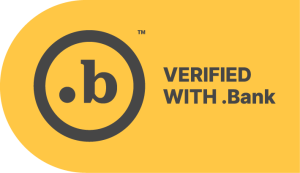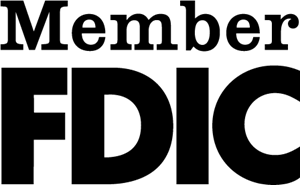Financial literacy programs for youth have been filling a gap for decades in America, and the best ones are helping teachers and parents prepare children to confidently and comfortably manage their money in adulthood.
Financial literacy hasn’t historically been part of the curriculum for primary or secondary public schools, but that’s starting to change. As of February 2020, at least 21 states were requiring high schoolers to take a personal finance course, according to the Council for Economic Education. That’s up from 17 states in 2018. And half of U.S. states require high school students to take an economics class—a net gain of three from 2018, according to CEE.
Former Federal Reserve Board Chairman Alan Greenspan once said the lack of financial literacy was the “number one problem in today’s generation and economy.” Many educators and financial literacy advocates have long been pushing for money management classes in schools, while others have cast doubt on their effectiveness. And economic fallout from the COVID-19 pandemic seems to have ignited even more interest in financial literacy.
Regardless of where you fall in the debate, there are some concerning statistics about our country’s relationship with money as a whole. More than half of American adults were experiencing financial anxiety prior to the U.S. economic downturn caused by the pandemic, according to a recent study. Research suggests millennials aren’t faring well financially, but that Generation Z is showing promise on the financial literacy front.
Kids don’t need a classroom to become financially literate. A growing collection of online resources is giving teachers and parents unprecedented access to some fantastic financial literacy programs for youth. Here are three worth checking out.
EVERFI’s FutureSmart
An international technology company focused on digital learning, EVERFI has several educational focus areas, including financial literacy. The company’s motivation includes well-circulated statistics that 40% of adults can’t afford a $400 emergency expense and almost 70% of American high school students don’t understand credit scores.
Aimed at middle schoolers, EVERFI’s FutureSmart program teaches the fundamentals of financial competency to tech-savvy Gen Z-ers through a digital format. Through this free online learning course, youngsters get to act as town mayor and help citizens resolve their financial problems. With just seven 25-minute lessons, FutureSmart’s story-based narrative and interactive exercises are easy to digest for youngsters. Concepts covered by the innovative curriculum include financial goal-setting, risk vs. return, budgeting, banking and saving.
More than 90% of students who completed the program gained knowledge about personal finances, according to a two-year study by the University of Massachusetts Donahue Institute. And those gains crossed all demographics, the study found.
More than 13,000 U.S. schools have used FutureSmart to teach financial literacy to more than 2 million middle school students. The program is on track to reach nearly 6 million students by 2025 thanks to a $50 million investment from the MassMutual Foundation.
Money Smart for Young People
Money Smart for Young People is a government-sponsored financial literacy program for youth run by the Federal Deposit Insurance Corp., an independent agency that insures up to $250,000 in deposits per bank customer.
In 2001, the FDIC launched Money Smart—a broad financial education initiative with individual components targeting children, young adults, adults, seniors and businesses. Money Smart for Young People is a free K-12 financial literacy program aimed at schoolchildren, offering four age-appropriate curriculums developed in conjunction with the Consumer Financial Protection Bureau.
Under the long-running program, students in second grade or younger learn about currency, earning money, saving and spending and borrowing and lending. As they get older, the courses evolve to include more sophisticated topics like investing, charitable giving and protecting your finances. A downloadable digital toolkit makes it easy for parents and teachers to get started.
In April 2021, the FDIC rolled out an enhanced version of the Money Smart for Young People curriculum with modernized educator guides, information about youth banking programs and the CFPB’s building blocks of youth financial capability.
Banks, schools and nonprofit organizations interested in partnering with the FDIC to promote the Money Smart for Young People program should consider joining the Money Smart Alliance.
High School Financial Planning Program
For high school students headed to college or entering the workforce, a financial literacy program could make all the difference. Teens are knocking on the door of adult financial responsibility, making it an ideal time to reinforce good financial habits.
That’s why the National Endowment for Financial Education created the High School Financial Planning Program in 1984. The HSFPP, as it’s known, is a turnkey financial literacy program broken into six modules on money management, borrowing, earning power, investing, financial services and insurance.
The HSFPP takes a research-based approach to financial literacy for teens, and its extensive library of resources provides teachers and parents with an abundance of articles, tools and templates.
An evaluation of the program published in 2017 highlighted the program’s success. All of the teachers surveyed said they’d recommend the HSFPP, and students who completed the program were more likely to develop money management plans, open savings accounts and pay closer attention to spending habits.
Despite the outstanding results, however, the NEFE is shifting its strategic focus and retiring the HSFPP after 35 years of teaching financial literacy to high school students—more than 12 million in all. The program will end July 31, 2021, but parents and teachers still have time to create a free account and download the full curriculum. Don’t miss your chance to tap into one of the best financial literacy programs for youth.
If you’re looking for other trusted financial literacy resources, be sure to contact Community Point Bank or visit one of our locations to speak with our staff. We’re invested in preparing the next generation to flourish financially.




